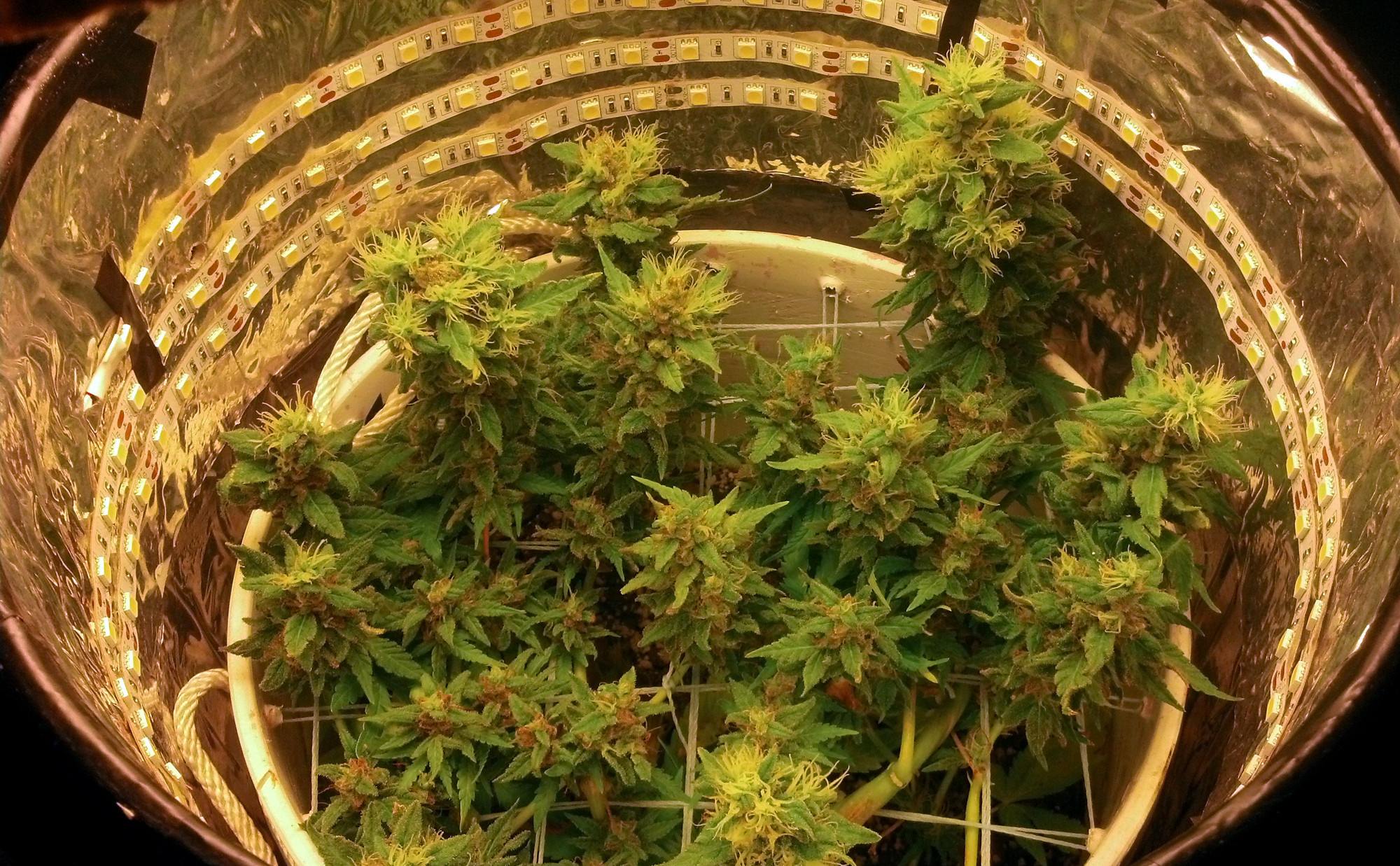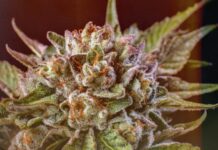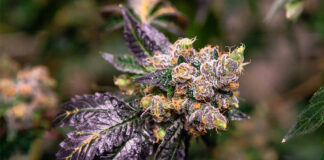There is nothing that brings a sesh down faster than a dirty pipe, bubbler, rig, or bong chalked in a gross amount of resin. This article will break down how to clean each kind of glass in a few easy steps with the simplest ingredients.
These six household staples — sea salt, isopropyl (rubbing) alcohol, tap water, grain alcohol, baking soda, and vinegar — are common key ingredients that can turn your goopy piece brand spanking new.
How to Clean Pipes Using Rubbing Alcohol and Sea Salt


When it comes to bowls, Sherlocks, chillums, one-hitters, and steamrollers — sea salt and isopropyl alcohol are best. This combination of two popular household items is the quickest way to clean popular dry glass pieces.
Ingredients
- ¼ cup (67 grams) coarse sea salt
- 6-8 tablespoons (89-118 milliliters) isopropyl alcohol, enough to submerge the piece fully in the bag
Materials
- 1 large zipper storage bag
- Cotton swabs
- Metal tongs with rubber pads
- Towel
Directions
- Add the glass piece inside the storage bag.
- Pour in the sea salt and isopropyl alcohol, then close the bag.
- Shake vigorously for 1 minute.
- Let the mixture soak sitting against a wall upright for 4-5 hours. (Make sure the glass piece is fully covered by the sea salt and isopropyl alcohol mixture.)
- Every hour, come back and shake for 1 minute.
- After 4-5 hours, the isopropyl alcohol mixture should become brown. This is all from the dissolved resin. Shake for 2-3 minutes to dislodge any resin plugs.
- Remove the pipe with tongs, and use a cotton swab to scrub any remaining sticky spots inside the pipe.
- Rinse under warm running tap water to clean your pipe fully and dry on a towel before use.
How to Clean Bubblers Using Vinegar and Heat
The beautiful child of a dry glass pipe and a bong, otherwise known as a bubbler, is best cleaned in boiled vinegar and water. So simple, right? Common household solvents such as isopropyl alcohol are safe when handled correctly, but solvents aren’t for everyone. This is where simple tap water and vinegar can come to the rescue.
Ingredients
- 2 cups (250 milliliters) tap water
- 2 cups (260-265 milliliters) white or apple cider vinegar
Materials
- Metal tongs with rubber pads
- Small bottle brush
- Small saucepan
- Stove
- Towel
Directions
- Add the water, vinegar, and bubbler to the small saucepan and bring to a boil. Reduce to a simmer or the lowest setting on the stove. Warning: Never place a cold pipe into boiling water. It will crack.
- Let the water simmer for 1 hour or until the water becomes dark amber.
- After 1 hour, gently pick up the bubbler and swish it around in the water to dislodge any plugs. Using a bottle brush, gently scrub the bubbler while plunged in the vinegar water.
- Gently remove the glass and rise under warm running tap water. Place onto a towel to cool and dry completely before use.
How to Clean Dab Rigs Using Grain Alcohol


Did you ever wonder if you could use the honey amber colored oil stuck within your oil rig? It’s called reclaim — and you can. Reclaim is decarboxylated, full of cannabinoids, and high in CBN. There is debate whether reclaim should be used, but as long as it isn’t reclaimed using a solvent, it should be safe, albeit undesirable to some. If you’re interested in adding it to edibles, use grain alcohol.
Ingredients
- 25.4 ounces (one 750 milliliter bottle) grain alcohol
Materials
- Glass 8-inch square baking dish
- Cheesecloth
- Small rubber spatula
- Towel
Directions
- Pour the grain alcohol into your rig until the inside is filled up fully. Place in a safe spot and let it soak for 24 hours.
- After 24 hours, plug the holes in the rig with your fingers and shake vigorously to dislodge the globs.
- Pour this mixture into the baking dish and cover with cheesecloth. Let the grain alcohol evaporate off for 1-2 days.
- Rise the rig under warm running water and place on a towel to dry.
- After the alcohol has been evaporated, scrape the honey oil from the dish.
How to Clean Bongs Using Baking Soda and Vinegar

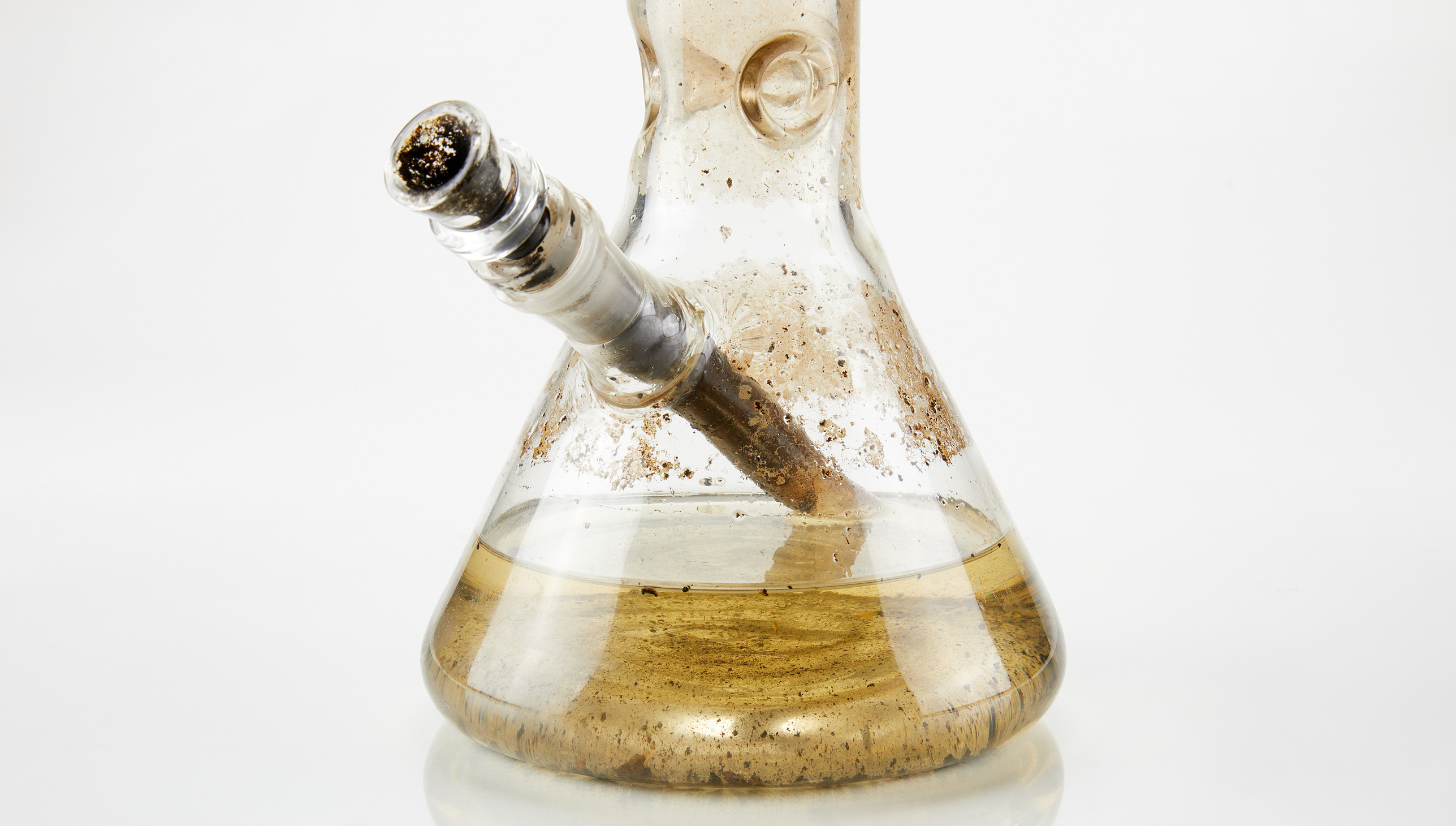
No one likes a dirty bong. Thankfully, a little patience, baking soda, vinegar, and hot water will solve this problem. Note: These instructions are for bongs 18 inches or smaller
Ingredients
- 4 cups (about 1 liter) white or apple cider vinegar
- 2 cups (460 grams) baking soda, plus an additional ½ cup (115 grams) baking soda in reserve
- Tap water
Materials
- 19 ½-inch tall (50 centimeters) 40 quart/10 gallon (37.9 liters) stock pot
- Bottle brush or toothbrush
- Measuring cup
- Metal tongs with rubber pads
- 2 towels
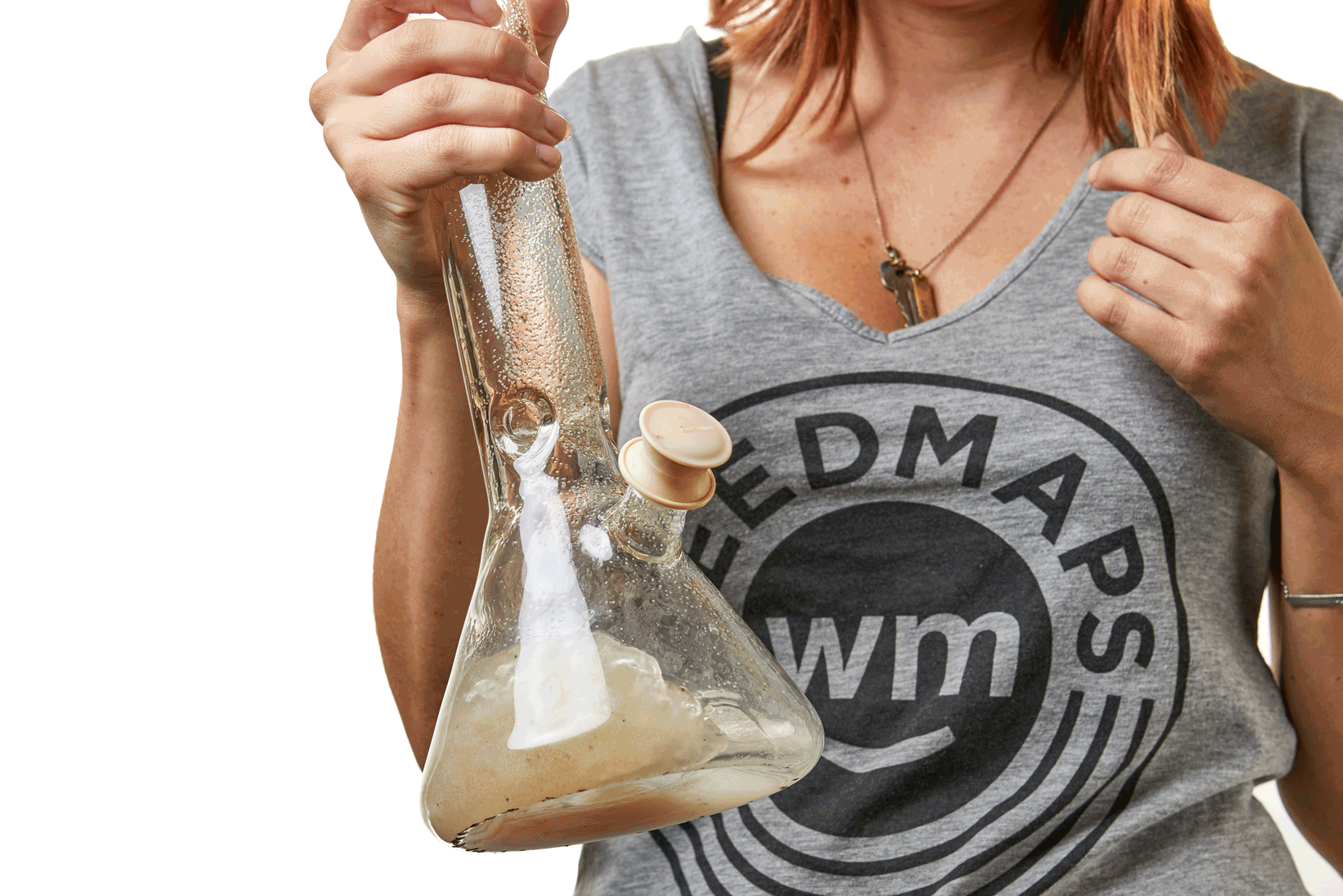
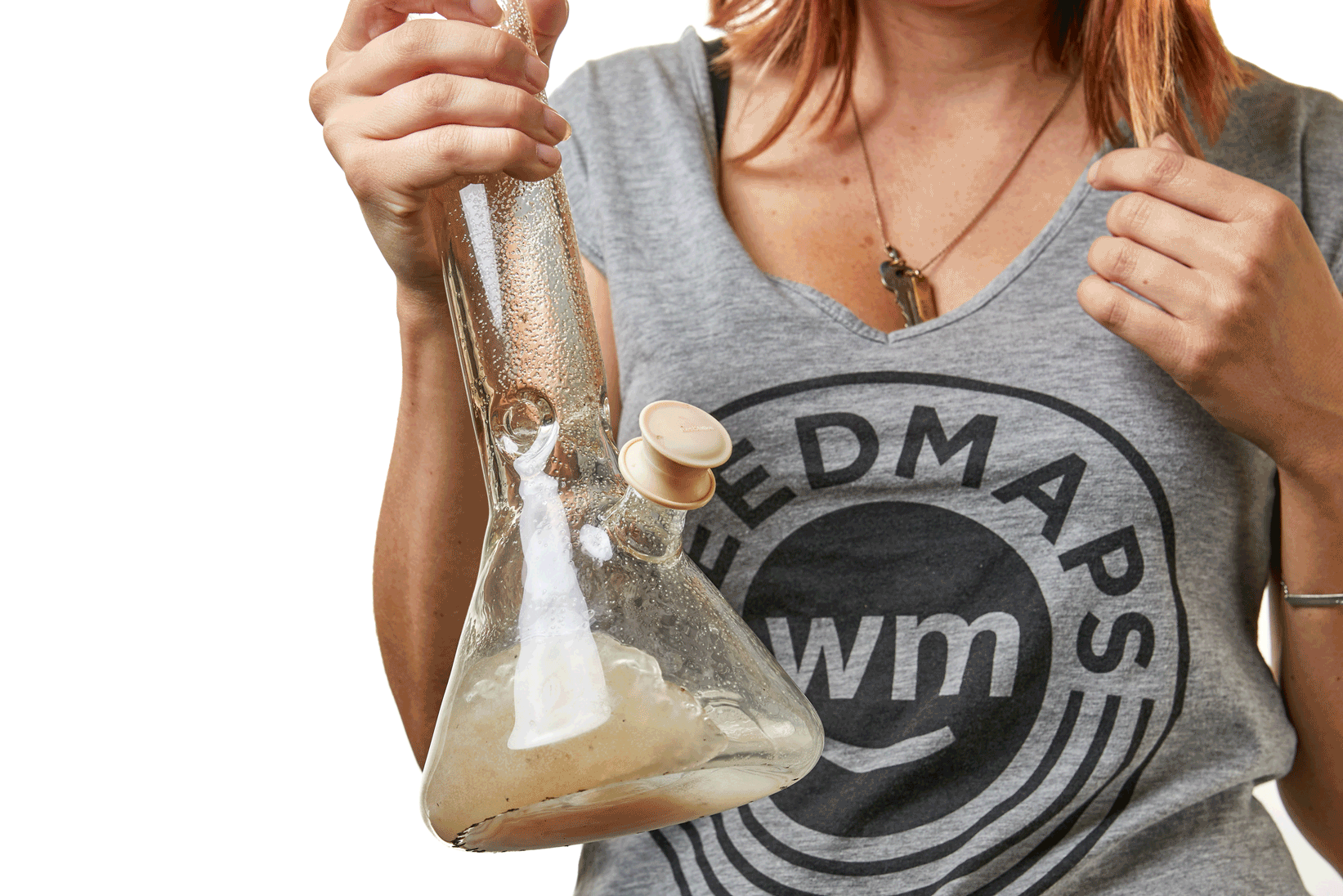
Directions
- Place the bong into the stock pot. Pour in 1/2 cup (115 grams) baking soda down the bong stem. Pour the remaining 1 1/2 cups (345 grams) of baking soda into the bottom of the pot. Set the ½ cup baking soda in reserve to the side.
- Slowly pour 1 cup (250 milliliters) of vinegar down the bong stem. This will cause an instant fizzy reaction creating carbonic acid. This will quickly dissipate into carbon dioxide gas and fizzle out.
- Add the remaining vinegar to the pot. Let this sit for 5 minutes.
- Add enough water to fully cover the bong. Bring to a boil then reduce to a simmer.
- Watch the water level and do not let the bong become exposed to air, or else the bong will crack. Add more water if needed to keep it waterlogged.
- Simmer the water for 1-2 hours, depending on resin buildup.
- After the time is up, turn off the heat. Gently pull out the bong with the tongs and drain the liquid. Place onto a towel. Carefully pour the remaining reserve baking soda into the bong. Add a few tablespoons of the vinegar water to make a paste.
- Gently scrub the inside of the bong with a bottle brush or toothbrush.
- Rinse the bong out with warm tap water and place onto the second towel. Air dry fully before use.
Jessica Catalano
Jessica Catalano is a professional cannabis chef, cannabis edibles expert, recipe developer, cannabis food writer, the pioneer of strain-specific cannabis cuisine, and author of The Ganja Kitchen Revolution: The Bible of Cannabis Cuisine published by Green Candy Press. Jessica explores the health benefits of using cannabis in everyday cooking, balanced nutrition, and an overall healthy lifestyle. Her penchant in life is to normalize cannabis through food and start the conversation one recipe at a time.


